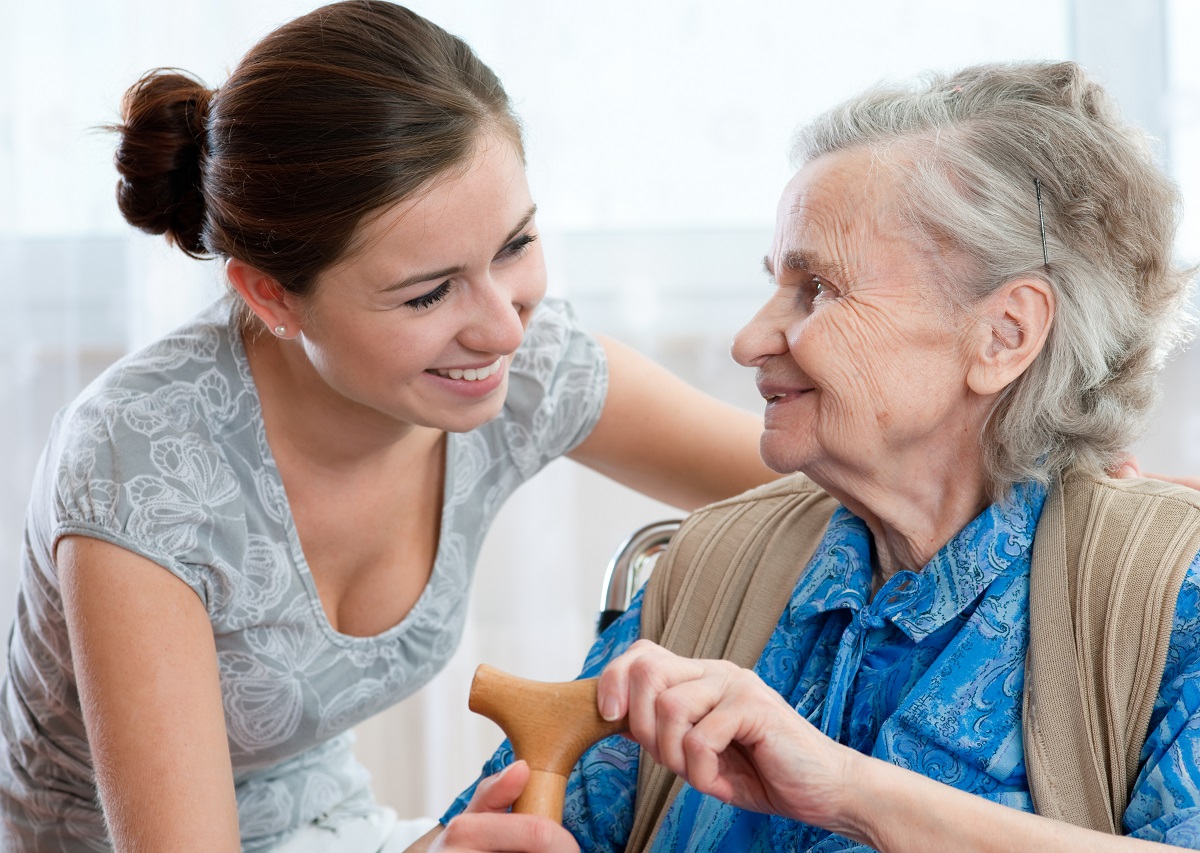Most dementias will at some point in their course, affect areas of the brain that are responsible for movement and balance. It tends to happen in the mid to later stages, unless it’s caused by another health problem such as back pain or arthritis. You may notice that the person walks more slowly or shuffles, and they have “unco-ordinated” movements. This doesn’t happen to everyone at exactly the same time, but in most cases, dementia will eventually affect the ability to walk and move around.
That’s where mobility items can help. From wheelchairs and scooters to ramps and walking sticks, there are plenty of products that can help the person with dementia and their carer adjust to a less mobile life, while still maintaining quality of life. Click on the links below for information on products that may help.
Transfers & hoists
Your dilemma:
You struggle to move the person you care for around the house, particularly, getting them up and out of chairs, beds or wheelchairs. You’re worried about your strength and the health of your back and need extra support.
Products to help
– Transfer boards
If you need to move someone from a wheelchair to a bed, a curved transfer board can be very useful. It allows them to shuffle across the board and onto the bed. However, they will need to have reasonable upper body strength to do it on their own, or support from you if not. You can get curved or straight transfer boards.
– Swivel seats
If the person you care for struggles with a turning motion, a swivel seat could help. These are cushions that are shaped like a disc or circle. The top layer of cushion can be swivelled round on top of the base, so if the person you’re caring for has trouble twisting to get out of a chair, this will do the movement for them.
– Handling and transfer belts
These are special belts that are worn by the person with limited mobility to help move them from a bed, for example, to a chair or wheelchair. The belts are sturdy, and have special handles and grips to ensure you have a secure hold.
– Flat sheet movers
These are used to move someone around a bed – either to help them turn over or to reposition themselves in bed. They could be useful for people who have limited mobility or are bed bound.
– Mobile hoists
These can be moved around the room or rooms within the house to different areas where the person you are caring for needs to be lifted. You will need training in using hoists if you care for someone at home.
– Standing aids
If getting up out of chairs or off beds is proving difficult, a standing aid could help. These can range from a grab rail or pole that’s attached to furniture to give you a handle to pull yourself up with, to walking frames and walking sticks.
– Handling belts and slings
When pulling someone up into a standing position, you want to avoid putting too much strain on your back. Using a handling belt or sling helps to spread the weight and pressure and so reduce the risk of hurting yourself.
– Inflatable lifting cushions
These are cushions that can be placed under someone and then inflated to help them into a standing position or into or out of somewhere such as a bath. They’re useful if someone has taken a fall and is having trouble getting back up again.
These products are good for…
Helping a carer feel more supported when moving someone around the house. It can also let the person who needs moving feel safe and secure.
Good to know
A 2005 review of studies on occupational therapists and carers found the use of slings, overhead and stand up lifters removed two thirds of the exposure to lower back stress.
Mobility scooters
Your dilemma:
The person you care for wants to get out and about, but can’t walk or stay standing for very long periods of time. However, they’re keen to maintain their independence and are quite capable of making their way down to the shops on their own.
Products to help
– Class 2 scooters
These are scooters that can reach a maximum speed of 4mph (6km/h) and are designed to be used on pavements, but not roads. They can usually mount small kerbs of no more than about 9cm.
– Class 3 scooters
These scooters can travel at a higher speed 8mph (12.8km/h) and are allowed to travel on the road, as well as the pavement. They tend to be slightly sturdier and more capable of mounting high kerbs. The Highway Code must be obeyed at all times when driving these on the road and whilst no driving test is required, it is a requirement to register with the DVLA for a nil duty tax disc and fit the scooter with lights.
– Light-weight foldable scooters
These are lightweight, easily manoeuvrable and suitable for short trips. They can be folded to put into a car boot. They have a top speed of 4mph and an option of a three or four wheel version.
These products are good for…
Providing independence to people who are still able to get out and about on their own, but just lack the same level of mobility.
Top tip
Although you don’t need a license to drive a mobility scooter, it’s worth taking time to consider how far along the person you’re caring for is in the dementia journey. If the reason they’re getting a scooter is because they can no longer drive a car, it’s likely they won’t be able to manage a mobility scooter either, especially if they’re prone to getting lost, or have had an accident in the car because they lost some of their spatial awareness.
Walking sticks
Your dilemma:
The person you care for is pretty mobile, but occasionally needs a walking stick or crutch to lean on for support. You want a stick that’s lightweight and easy to carry around.
Products to help
– Sticks
Go for sticks that have smooth, ergonomically shaped handles so they’re comfortable to grip.
– Stick seats
These are walking sticks with an added seat that folds out at the top or side of the stick, so that the person carrying it can lean or perch on it.
– Folding sticks
Useful if you’re heading out somewhere or want to take a stick on holiday with you, a folding stick can be ‘folded’ up concertina-style so that it fits into a handbag or glove compartment of a car.
– Crutches
A crutch will provide a little extra support over a regular walking stick because it is longer and fits under your elbow to take some of the weight. They also have a cuff to hold the stick in place.
These products are good for…
Someone who can walk or stand but needs a little extra support for long distances or periods of time, helping they feel secure yet independent. Using a walking stick combats feelings of worry and helplessness when changes in mobility begin to limit the enjoyment of being able to walk.
Top tip
Sticks and crutches have rubber feet, called ferrules, which keep them from slipping. Check these regularly for wear, and replace them if necessary. Replacements are easy to buy and fit. You can also get special ferrules that give added grip or stability.
Frames and rollators
Your dilemma:
The person you care for can get around the house, or make their way to the shops, but they’re slow, and don’t have the coordination that they used to, meaning using a walking stick no longer provides the support they need. They need something that will provide a uniform balance, rather than support for just one hand.
Products to help
– Walking frames
These are simple aluminium frames with four feet that you lean on and walk forward with. Some have a set of wheels on the front two legs.
– Rollators
These are heavier duty frames, which have wheels on each of the legs. You can get them with three or four wheels, and some have baskets attached to hold shopping. Rollators usually have hand breaks which are attached to the wheels for added control.
These products are good for…
Providing support when out and about and so helping to boost independence for people with dementia and mobility problems.
Good to know
Walkers are often called Zimmer frames, which comes from the company Zimmer holdings, which manufacturers the aluminium frames.
Wheelchairs
Your dilemma:
The person you care for can no longer walk more than a few steps, if that, and are reliant on a wheelchair to get around.
Products to help
– Self-propelled wheelchairs
You can either opt for a wheelchair where the person sitting in it has to turn the wheels themselves, or an electric powered wheelchair that you operate through a switch on the arm rest. The latter is more suited if the person is unable to turn the wheels of the chair themselves.
– Attendant controlled wheelchairs
These tend to have smaller back wheels which you can’t reach down to turn if you’re sitting in the chair. They need to be moved by an attendant pushing from behind.
– Folding wheelchairs
If you’re heading out for a day trip or have minimal space at home, a folding wheelchair could be the answer. The arms can be pulled together and the seat folded so it collapses and can be slotted into a small space or put in the boot of a car.
These products are good for…
People who want to get out and about but can’t walk very far distances.
Good to know
Wheelchairs are VAT exempt for people who qualify and you may be able to get them for free, or at a reduced price. Click here for more information.
Ramps
Your dilemma:
The person you care for regularly uses a wheelchair or wheeled walking frame or rollator around the house and garden, but there are small steps and ledges where they get stuck.
Products to help
– Channel ramps for wheelchairs
These are ramps that have a raised edge or channel to help guide wheelchairs over the ramp without the wheels sliding off the side of it.
– Telescopic and folding ramps
To save space, a telescopic or folding ramp will either slide in or fold over itself. Telescopic ramps are also useful if the gap that the chair needs to go down is longer or shorter than expected, as the ramp can be extended or shortened as appropriate.
– Portable ramps
These are smaller, lightweight ramps that are useful for taking with you when out and about – they’re often provided in a carry bag that can be attached to the back of the wheelchair.
– Threshold and bridging ramps
As many door frames can have short rises, it can create a challenging barrier for a wheelchair user (and a trip hazard for someone who is less steady on their feet). Threshold and bridging ramps will create a smooth base to wheel or push the wheelchair or walker over the barrier and through the door without it catching.
These products are good for…
Creating a safe environment for someone with limited mobility to use a walker or wheelchair.
Top tip
If you’re out on the bus with a wheelchair user, most are fitted out with a special ramp which can be lowered onto the pavement when requested, to allow you to roll the chair on or off the bus.
Grab rails
Your dilemma:
Your loved one sometimes struggles to get around the house and can be a little unsteady on their feet when getting up from beds or chairs.
Products to help
– Grab rails
These are usually fixed directly to a wall – both indoor and outdoors – to provide an extra bit of support for someone. They are useful near areas with steps, and for getting into or out of baths and showers, helping to instill confidence.
– Fold away or drop down rails
These are usually fixed next to a toilet to provide a handle for someone to lean on as they pull themselves up from a sitting position. They can be raised up and out of the way for other users.
– Floor to ceiling grab bars
These are fitted bars that reach from floor to ceiling, and have a curved handle to hold onto. They’re useful in bathrooms to help someone get out of the bath, but are equally handy in the bedroom next to a bed.
These products are good for…
Grab rails are a great way of providing support, boosting confidence and encouraging independence
Good to know
Many grab rails are available in bright contrasting colours – such as red or blue – so they are easy for the person with dementia to spot.
Car travel
Your dilemma:
You care for someone who enjoys going out in the car, but they struggle to get into and out of the vehicle.
Products to help
– Swivel seats
If the person you care for struggles with a turning motion when stepping out of the car, a swivel seat could help. These are special cushions that are shaped like a disc or circle. The top layer of cushion can be swivelled round on top of the base, so if the person you’re caring for has trouble twisting, this will do the movement for them.
– Standing frames
These provide a frame and base that you can put next to a chair, toilet or outside your car door, to lean on to pull yourself up into a standing position.
– Car caddie
This is a handle that straps around the top of the car window frame and is secured firmly in place with a buckle. It provides support to pull up from, when getting into or up from a car seat.
These products are good for…
Helping to make the move into and out of a vehicle easier for someone with limited mobility.
Top tip
To avoid twisting and straining your back when getting out of a car, try to ensure that you have both legs facing out of the car door before you attempt to pull yourself out.
Shopping
Your dilemma:
You or the person you care for enjoys getting out to the shops regularly, but struggles to carry shopping back.
Products to help
– Two- and four-wheeled trolleys
These are shopping containers – rather like a suitcase – that can be wheeled, either on two or four wheels. They make transporting items home much easier as it places minimal stress on your arms, so ideal if you have less strength in your arms now.
– Walking frame baskets
You can often attach a specific basket to a walking frame to put items in while out shopping or walking around the home or garden.
These products are good for…
Maintaining independence by allowing someone to head out to the shops to buy items without having to carry heavy bags back. Ideal for someone who still has relatively good mobility to steer the trolleys or walkers with items in them.
SHARE
Explore more




